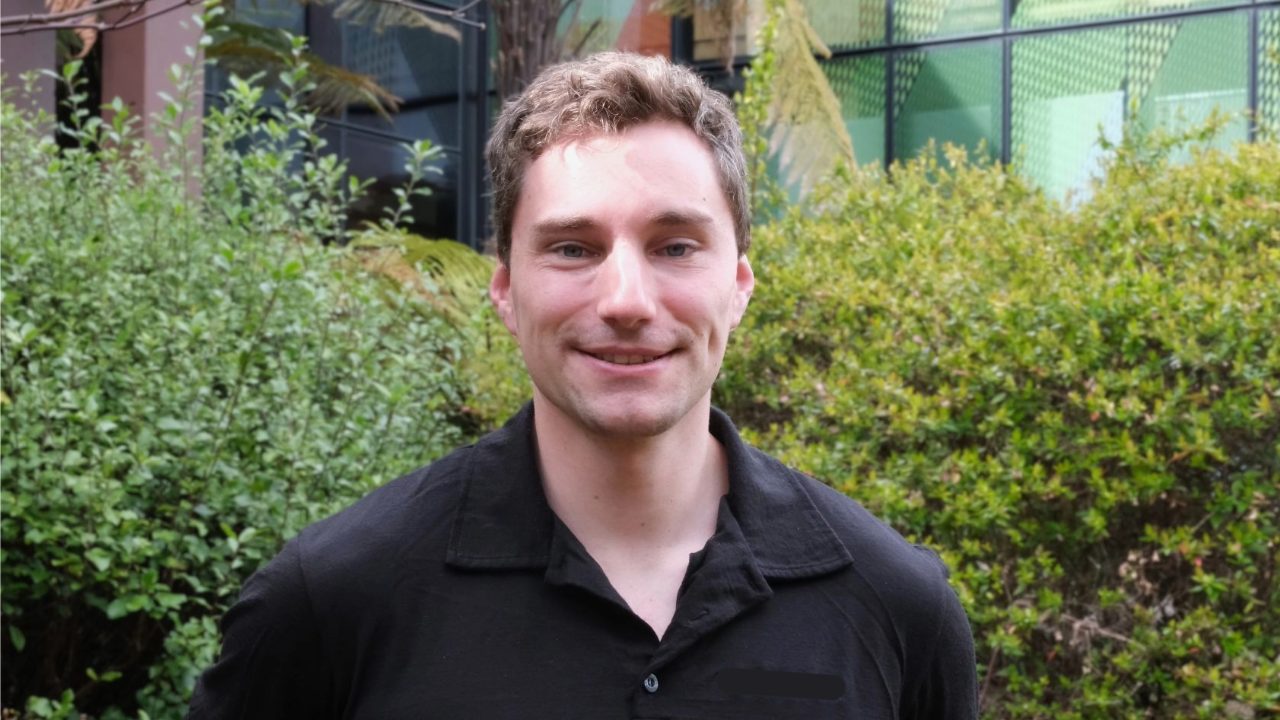
Positive attitude opens doors for scientist
Tom Carlin doesn’t like to turn down opportunities.
This practice has led him to a career already dotted with highlights despite its infancy. These include working with world-leading invasion ecologist Phil Hulme while completing a PhD at Lincoln University. Tom has also recently become the president of the New Zealand Plant Protection Society and is recognised for his expertise in managing wilding pine spread.
As an invasion ecologist and early career researcher at the Bioeconomy Science Institute, Tom’s role is focused on understanding the spread of wilding conifers and other invasive species across New Zealand. He finds wilding pine research particularly interesting because it’s a huge problem for the country, affects landscapes and a range of stakeholders, and is hard to get on top of.
“Wilding conifers can spread across many kilometres, as seed is carried on the wind,” Tom says. “They can therefore invade a variety of habitats and threaten many of New Zealand’s already vulnerable and unique ecosystems.
“Our latest research shows some conifer species in New Zealand have evolved to become more invasive than anywhere else in the world – and every day they're left to spread will cost us significantly more in the long run. Wilding conifers can also increase the severity of wildfires.
Tom is regularly called on to comment publicly on this issue.
He is also the Urban Forests programme lead. This aims to establish projects that enhance ecosystems – building on Tom’s passion for conservation and restoration.
“It’s an area I’ve always been interested in but haven’t had the chance to work in before,” he says. “It’s more on the conservation side, trying to restore ecosystems rather than just removing things."
He has recently authored a paper on urban forests, which has been published in the international Urban Ecosystems journal.
Tom’s expertise extends to computer modelling, predicting how native and invasive species might respond to climate change. “We model everything, from species we want to plant to pests we want to keep out of New Zealand,” he says.
Background
Tom didn’t know exactly what he wanted to do until he was applying for university. “I nearly went to do maths, but I decided that I was really interested in animals. So I studied zoology and then shifted into ecology, which is a bit broader.”
After finishing his zoology degree and a master’s in ecology at the University of Exeter, Tom came to New Zealand to undertake the PhD at Lincoln. “I applied on a whim, didn’t know much about Lincoln at the time, and was surprised to get the interview,” he says.
The move to New Zealand was exciting and brought other surprises for Tom, such as the native birds that greeted him with their distinctive song every morning on the Lincoln campus, which he says was different and nice.
Tom’s PhD focused on the global spread of invasive weeds, using spatial modelling to understand why certain species thrive in some climates but not others. “It was a mixture of computer and field work, looking at why species occupy different places and how that might change with climate,” he says.
After finishing at Lincoln, Tom joined the Bioeconomy Science Institute in April 2021 as a technician in the soils team. He soon moved into a scientist role and has been at the forefront of the organisation’s efforts to understand and manage wilding conifer invasions since 2022.
The best part of his job, he says, is the blend of fieldwork and office-based research. Tom grew up in Leicestershire in England – a long way from the sea or mountains, and he says now it’s hard to beat getting outdoors with a great team. He also loves the variety and camaraderie of working alongside colleagues – and the freedom to design his own projects and follow unexpected leads.
“We’ve published papers on things we hadn’t anticipated, just because we noticed something interesting in the field,” he says. “It’s about problem-solving and asking questions no one else has thought to ask.”
Outside work
Tom is an avid hiker, scuba diver and amateur powerlifter; he’s competed in various regional competitions over the past six years.
He lived for a while at Rotorua’s Whakarewarewa Village when he started working at the Bioeconomy Science Institute. “Everyone was super-friendly and I had a really great time there.”
He’s enjoyed many fieldwork adventures across the North Island, explored the Bay of Plenty – Rainbow Mountain and the Blue Lake are favourites – and is now happily settled in Christchurch. “So much is accessible here,” Tom says. “You've got the mountains only an hour away and the ocean 10 minutes away. You can get down to Queenstown or Dunedin or go up to Marlborough or pretty much anywhere within a reasonable time.”
Future goals
In his role as president of the New Zealand Plant Protection Society, Tom is keen to extend the society’s reach into urban environments and the Pacific, and to help shape policy through impactful research.
In the year ahead, Tom will continue to seek out and embrace opportunities – some of the best things in his career have come from responding to an email or reaching out to someone new – and he’ll focus on publishing papers and securing funding for new projects. “I want to make a difference for stakeholders, especially in the wilding conifer space,” he says.
